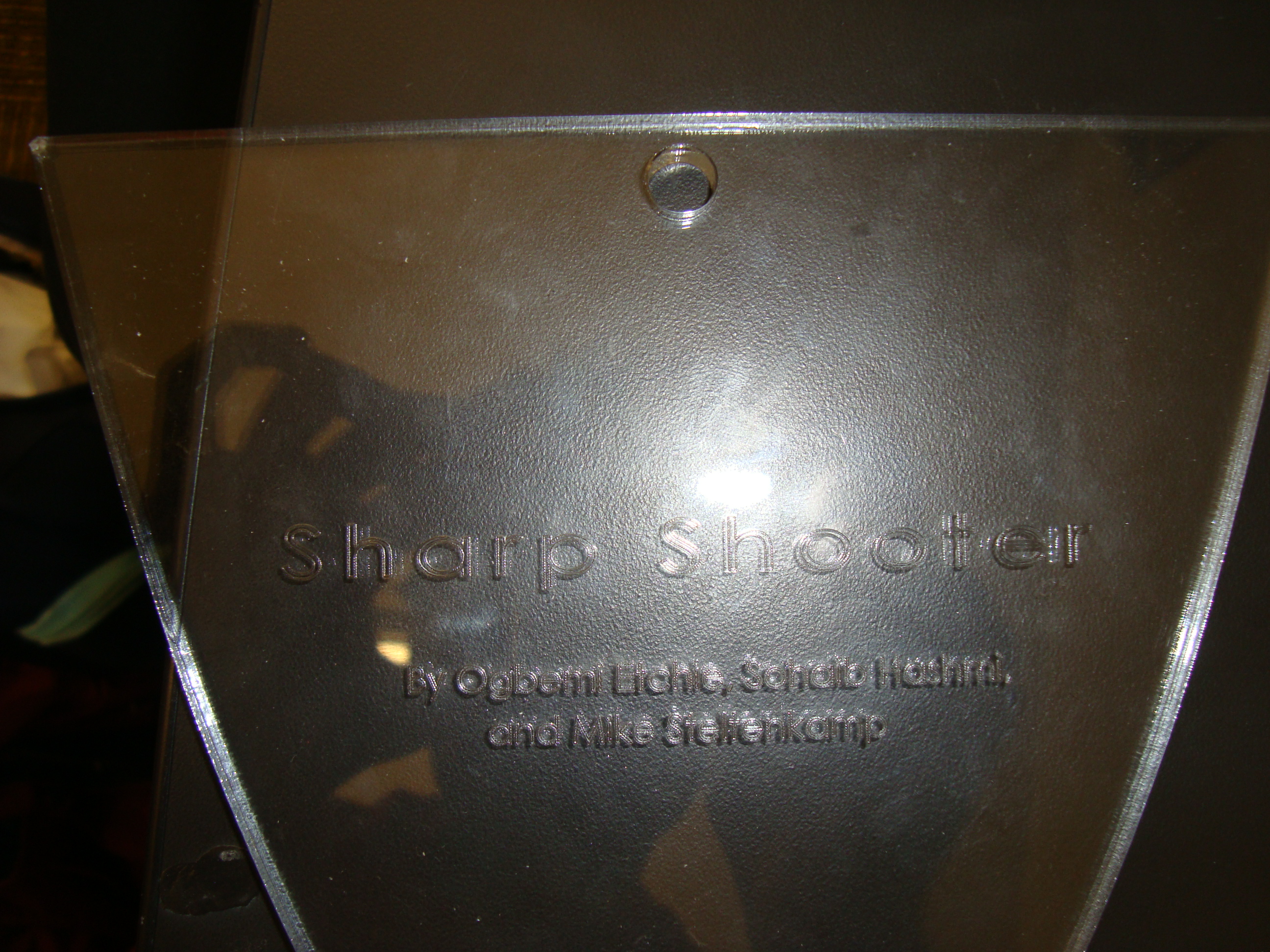Tuesday, March 23rd 2010
The team was formed:
• Ogbemi Etchie
• Sohaib Hashmi
• Mike Steltenkamp
Wednesday, 29th March 2010
Sohaib – Initial sketches completed. Brainstorm of possible materials.
Sketches: To be added later
Materials:
Base – 1/4” MDF sheets
Hoop post - 1/4" black acrylic
Back-board - 1/4" clear acrylic
Rim - Steel (?)
Release Arm (shooter) – not sure (need something which is slightly flexible)
Monday, 5th April 2010
Mike and Sohaib - Meeting with Amanda Punim, our 150 liason. Discussed the design ideas. Amanda gave some valuable input. SHe suggested machining the shooter using metals. She also told us that the base of the shooter which will slide in the slot should be circular. Possibility of a parabolic slot considered. Time frame discussed. The modeling in Solidworks is to be completed by the end of the week. Amanda can machine the parts we need next week.
Sohaib - Finished modeling the base as well as the two layers with the slots for the track.
Mike - Modeled the hoop and the backboard
Tuesday, 6th April 2010
Ogbemi - modeled the posts for football field goals.
Sohaib - Talked to libert about parallel parabolas. Modified track to ensure equal spacing. Modeled half of the shooting mechanism.
Tuesday, 13 April 2010
Talked again with Amanda in order to finalize our design for the shooter.
Thursday, 15 April 2010
Finished the shooter model
Adjusted the dimensions of the base slots
Sunday, 18 April 2010
Finalized the hoop and submitted it to be 3D printed
Came to decision to use netting support by two posts to stop the balls
Monday, 19 April 2010
Mike - Finished the shooter and submitted to Amanda to be machined as well as finalized the post and field goal and sent them
to be 3d printed
Ogbemi and Sohaib - Laser cut the mdf. There were problems with the cutting due to less than optimal laser cutter function.
Tested out our springs.
Tuesday, 20 April 2010
Sohaib - Designed a part which would accommodate the net we were planning on using to catch the ball after each shot in order to prevent the ball from getting lost.
Friday, 23 April 2010
Amanda gave us the machined part. A few problems:
1) The part was made out of steel and not wood as we had initially anticipated.
2) The shooting platform was shorter than specified leaving insufficient room for the player to place his finger on it to flick the ball.
3) The indent for the spring was smaller than specified which had the potential to create problems when we would try to fix the spring.
We successfully cut out our part for the net and posts to hold the net up. We tried to cut our base parts again but the laser cutters were, once again, performing at less than maximum efficiency. Despite trying to adjust the settings, we were unable to cut through. Due to the large volume of people waiting to use the laser after us, we could not re-run the print job.
We carried out tests on our shooting mechanism. After experimenting with 4 springs, we were able to isolate the one which appeared to be best suited to the mechanism. The ball was moving in the right path but the difficulty level of the game would be high. Further testing was limited until the hoop and the field goal posts were 3D printed.
Saturday, 24 April 2010
Sohaib - Tried to re-run the print job in the morning between 10.30 and 11.30am for the base parts. The lasers were extremely busy and I was unable to get our print job in.
Mike - Made a second attempt at running the print job at 5pm. Once again, we were unable to get our piece in for cutting due to the large volume of people waiting to use the laser.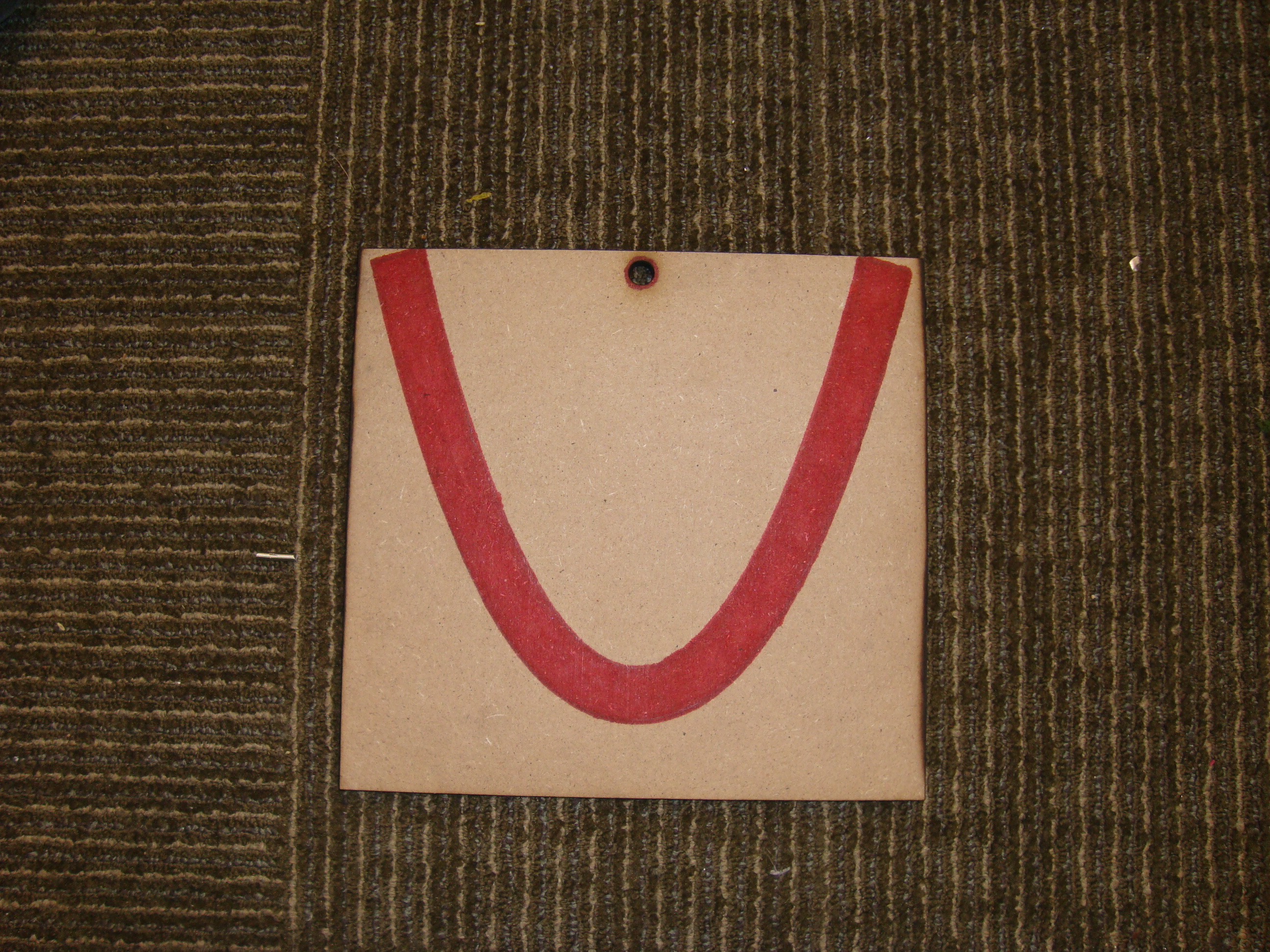
Sunday, 25 April, 2010
Mike and Sohaib - Arrived at the lasers at 8am. Laser 2 was having some problems detecting our print job. The settings seem to have been altered and the laser was no longer lining up with our previously half-cut part. As a result, we had to obtain a new sheet for cutting. A 1/4" sheet of acrylic was found in the scrap pile which we decided to substitute for the MDF. Once again, Laser 2 was having problems cutting through. The lens may require cleaning.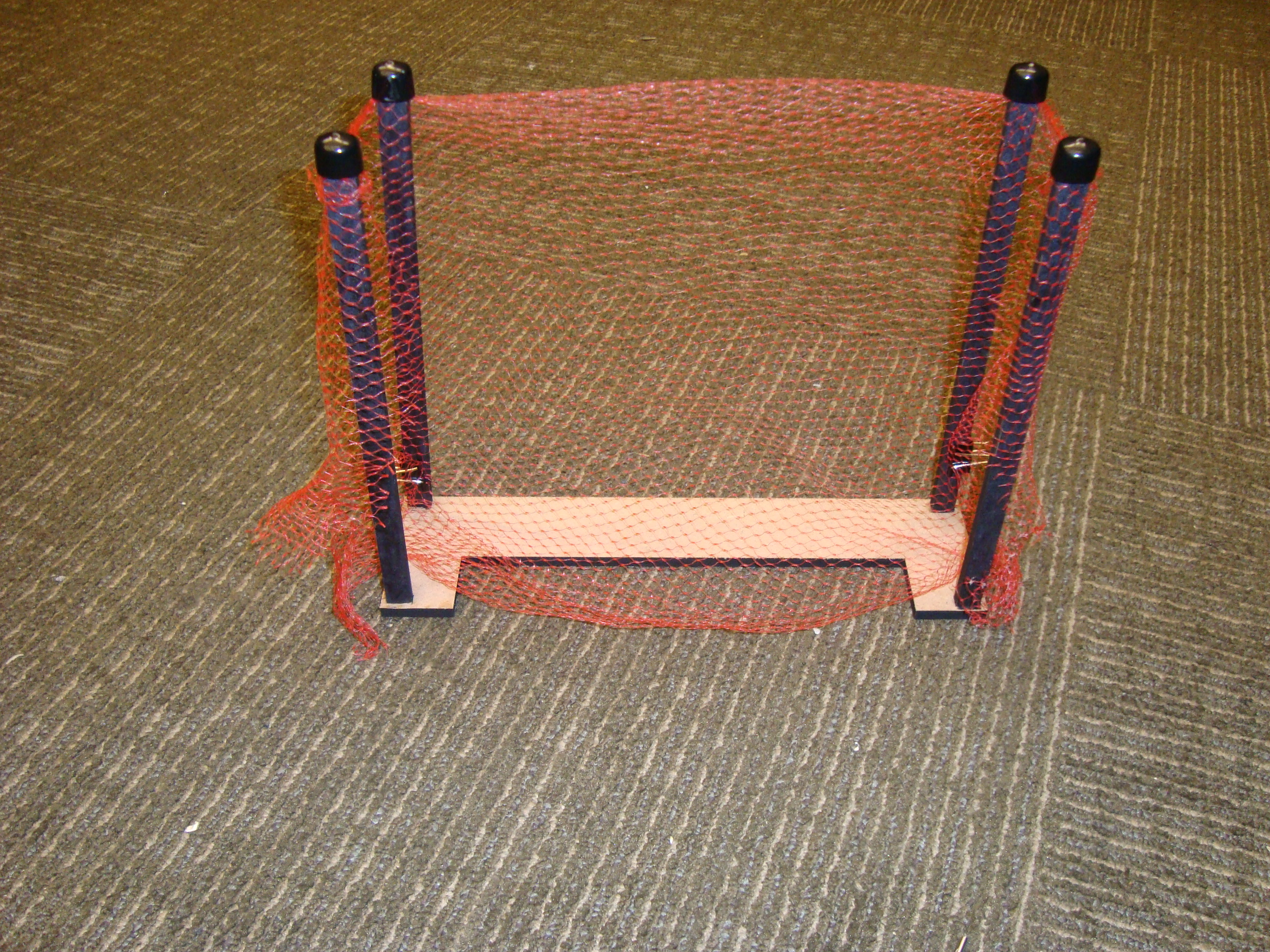
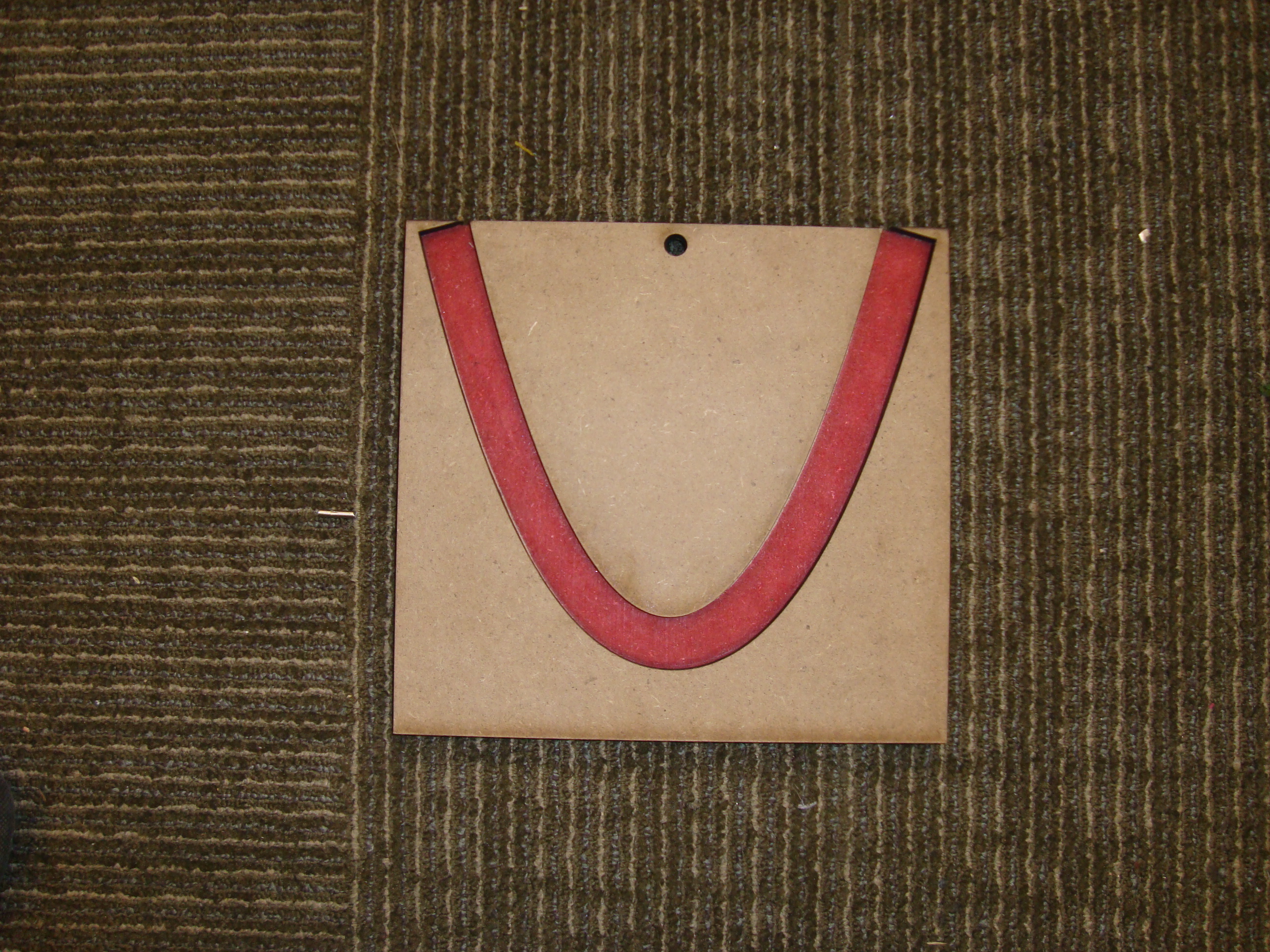
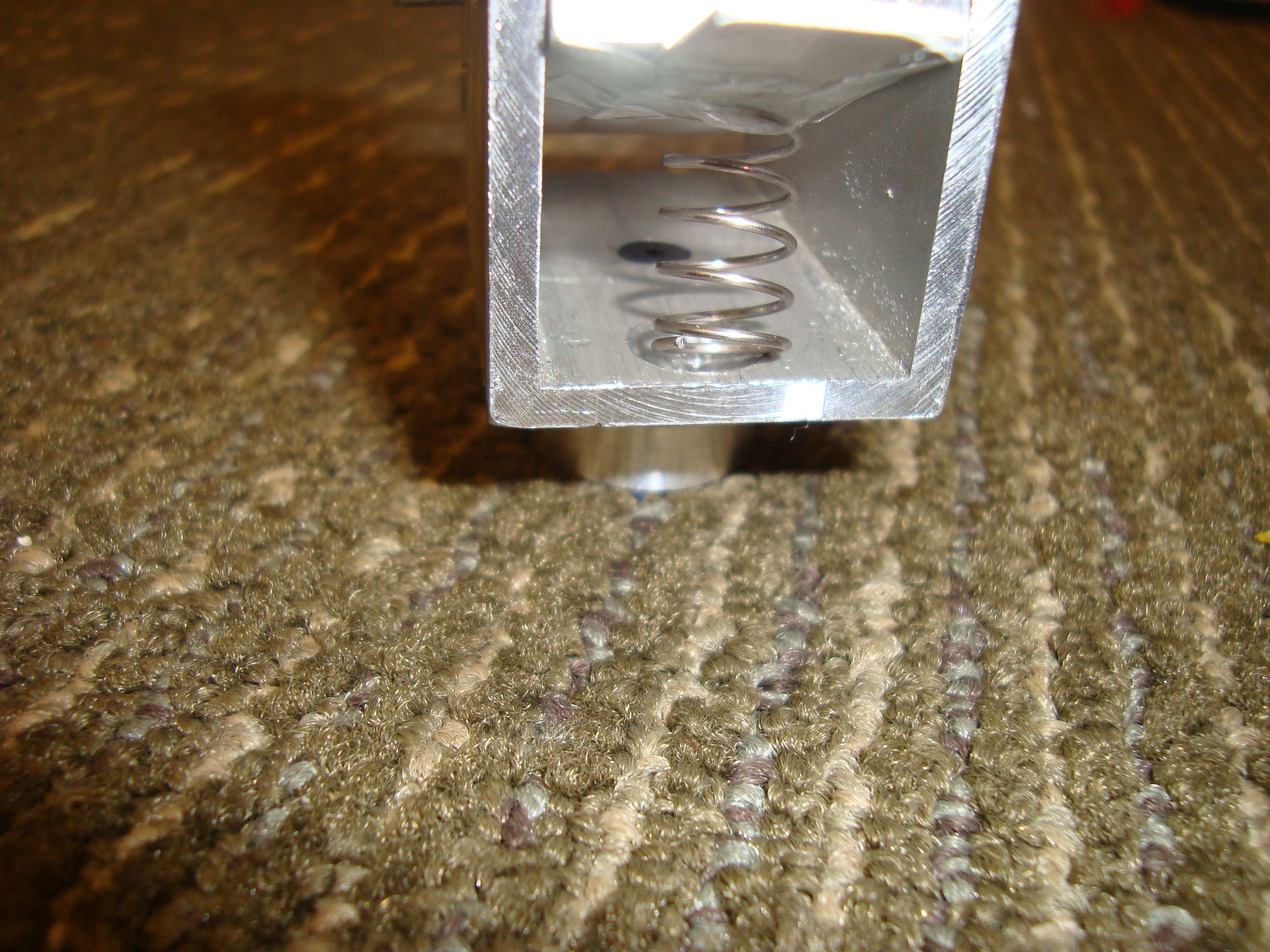
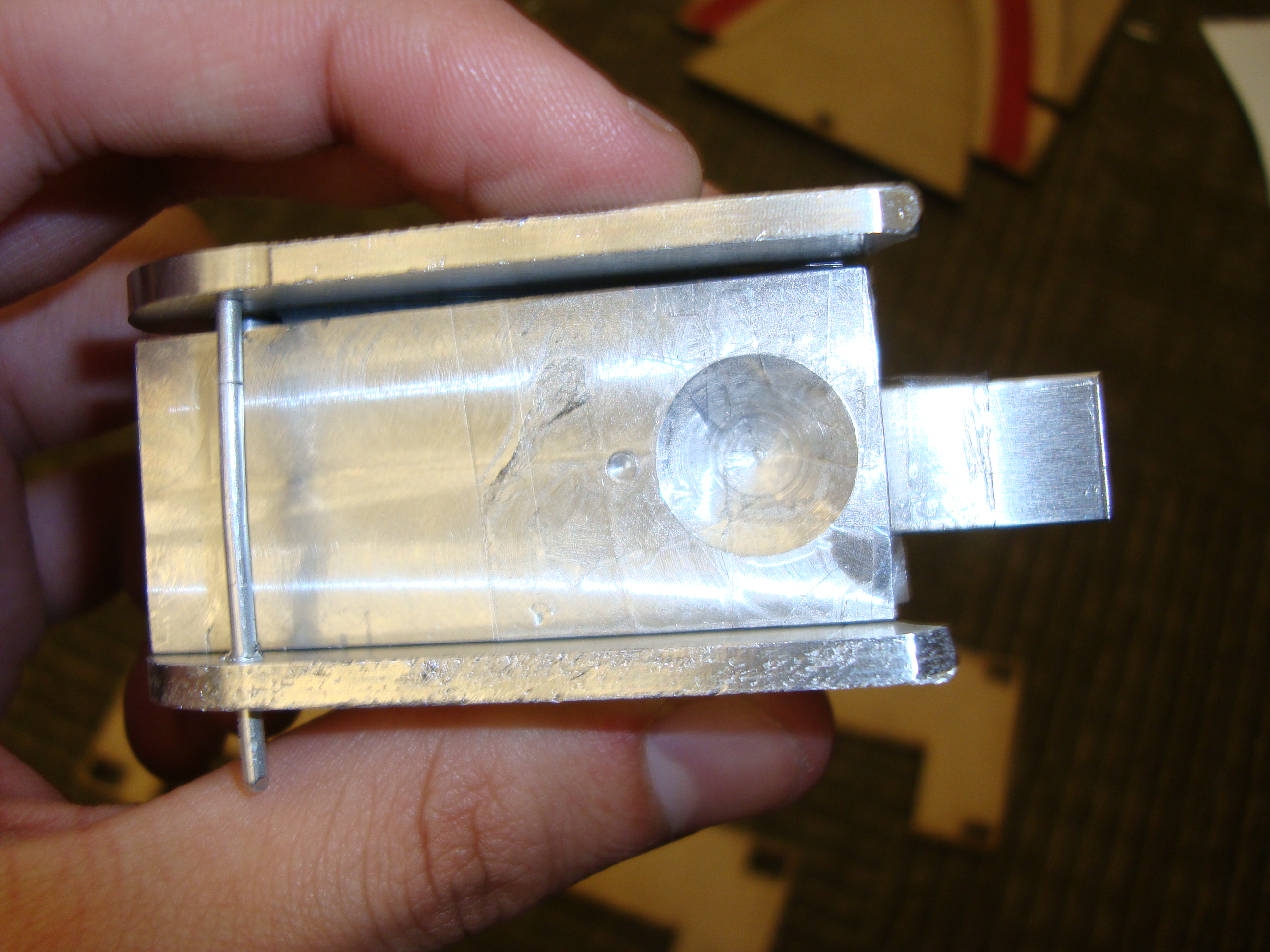
This is the final outline of the materials and techniques we eventually used in creating our game:
* The bottom two layers of the three-layer base were cut from 1/4" MDF.
* The top layer was cut from 1/4" acrylic.
* The frame of the net was cut of 1/4" MDF.\\
- The posts for the net were also cut from 1/4" MDF.
* The Hoop and the Field goal posts were 3-D printed.
* The shooting mechanism was machined out of steel.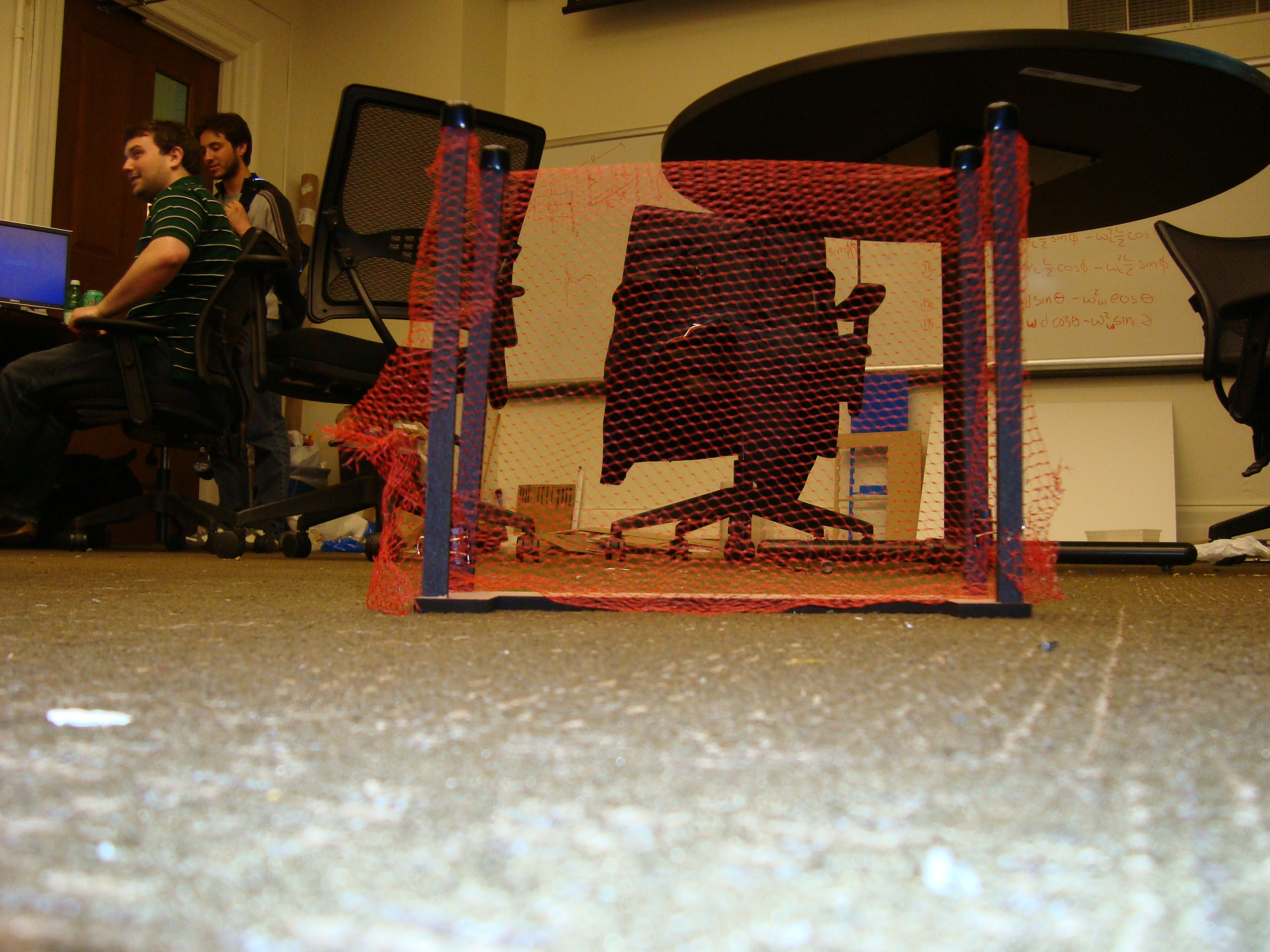
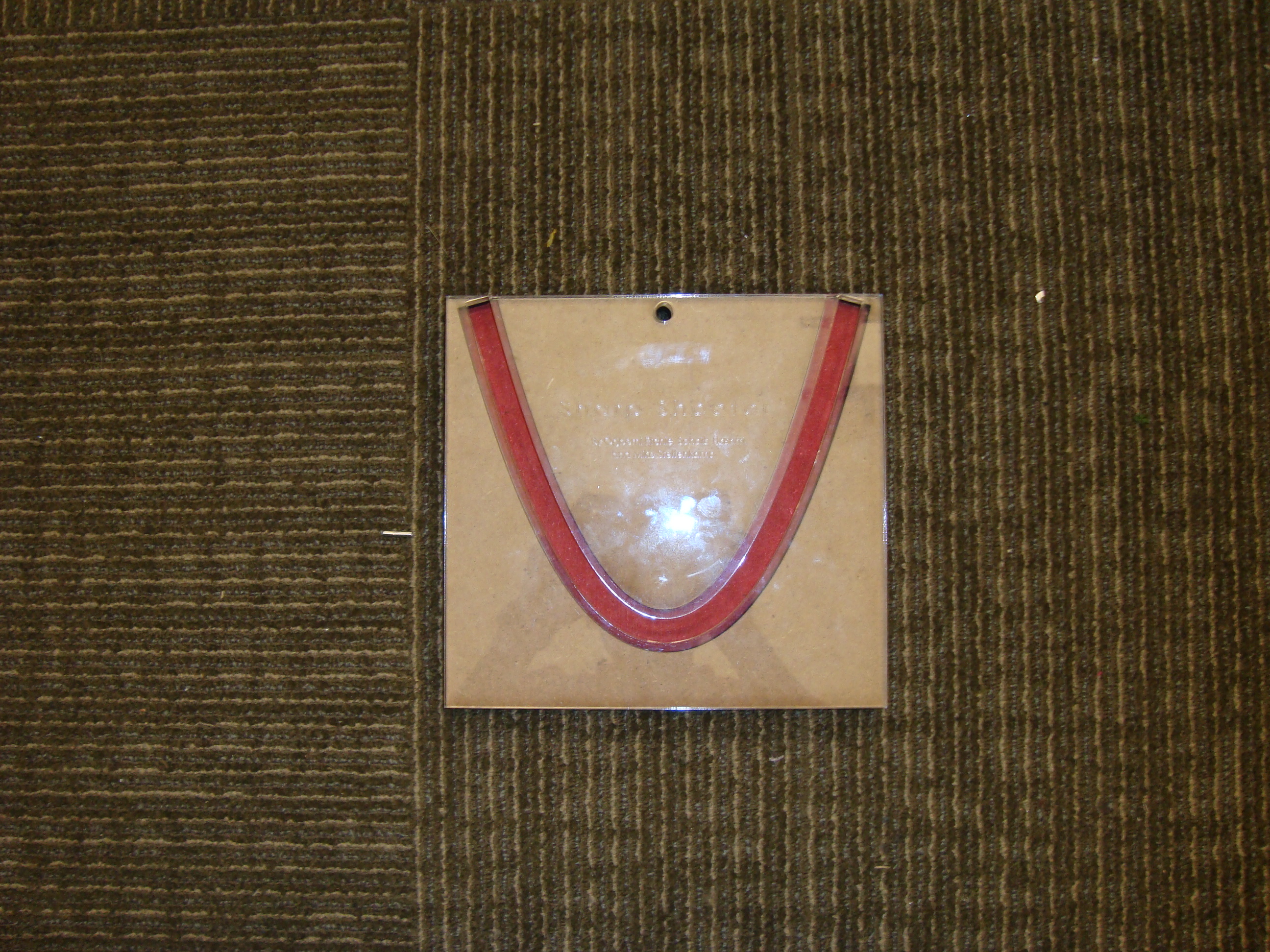
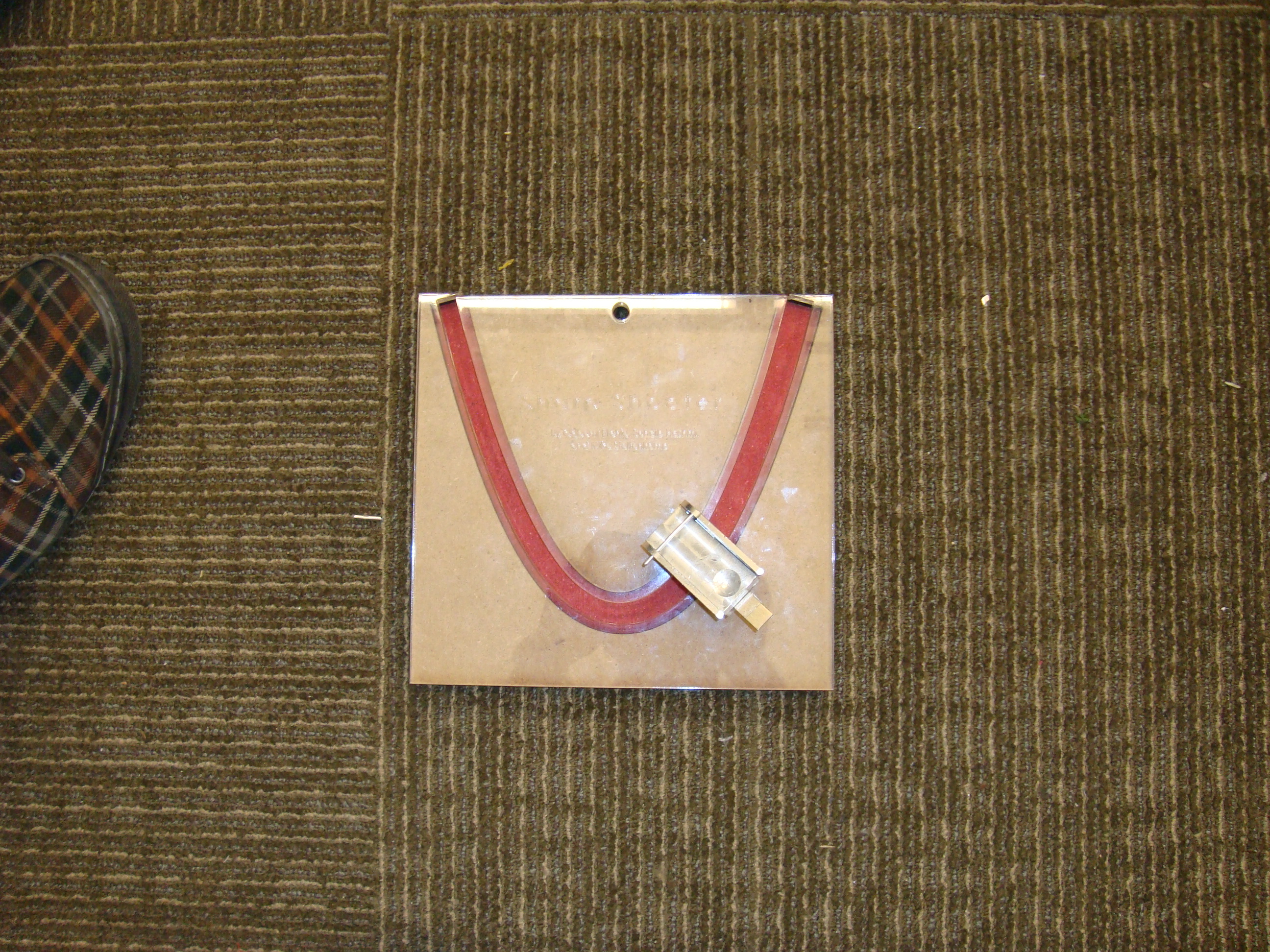
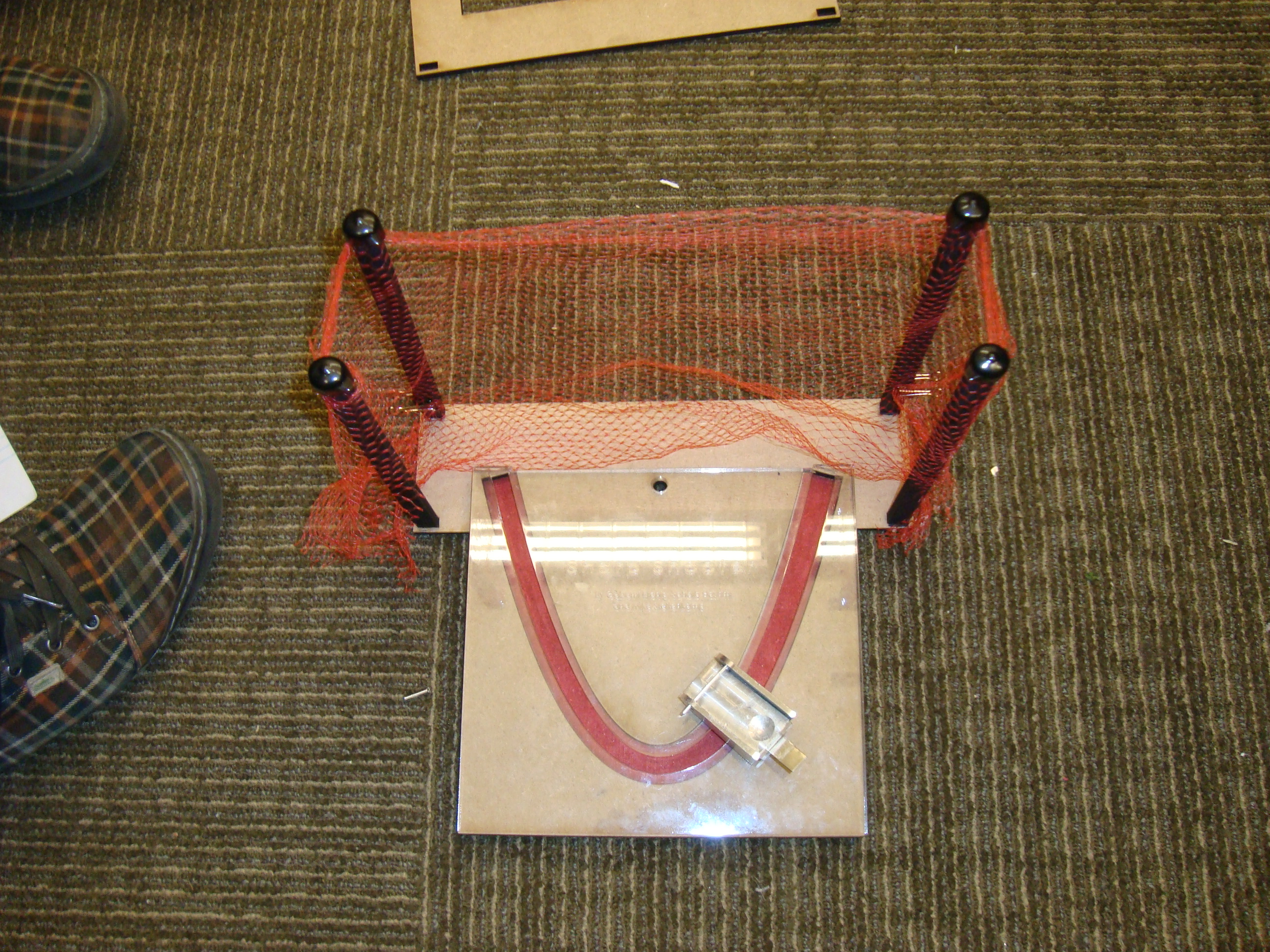
Our hoop and field goal posts were expected to arrive at 11am on Monday. On Sunday evening we put together the entire setup minus the hoop and goal posts. The layers of the base were glued together using hot glue. the netting was fixed around the frame using clips, tacks, and fasteners. The top layer of clear acrylic was colored black using permanent markers in order to mask the glue visible underneath. A file was used along the edges of the 3-layer base to smooth them out and create an even finish. The black marker was also used on all the exposed MDF surfaces to give a uniform appearance.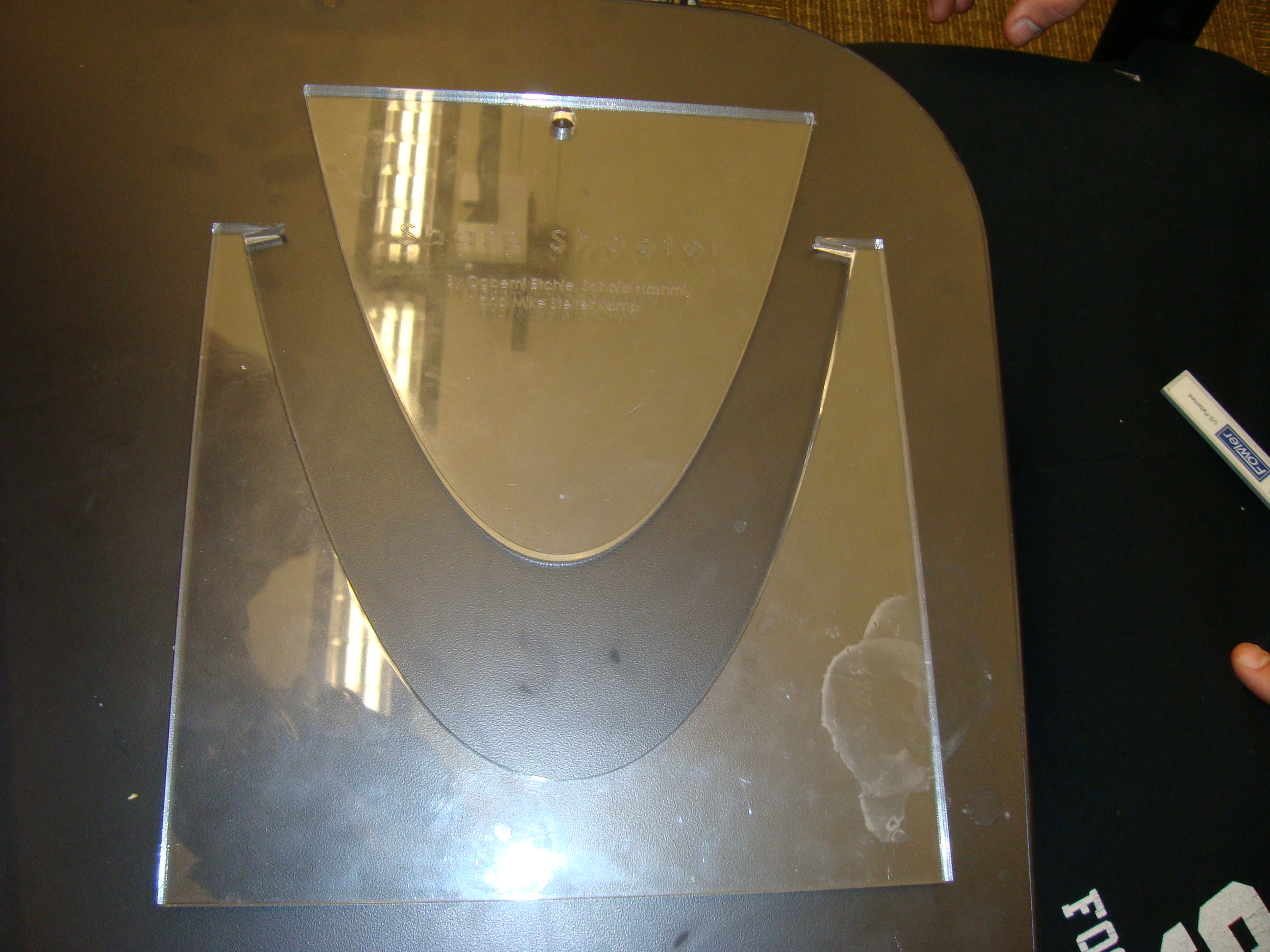
The SolidWorks files were updated. The final assembly was rendered using Photoworks. An 8.5"x11" poster was created using Adobe InDesign which provided an outline of the manufacturing process as well as pictures chronicling it.
Monday, 26th April 2010
Our hoop came out from the 3-D printer at 12.59pm, exactly one minute before the game was to go on display! Unfortunately, as a result of this we were unable to leave the parts in the bath long enough for the support material to completely dissolve. As a result of this, the holes that we had made in the post to insert the hoop or the field goals were clogged with support material rendering our plan to interchange between the hoop and the field goal useless. We improvised by using hot glue and tape to attach the hoop to the post and were forced to leave the field goals out of the game.\\\ Despite the setbacks, the game was a roaring success with many people coming back several times to play it. The difficulty level was high enough to make it interesting but not so high that it was impossible to make the shot. In the end, we think we achieved the purpose of the project which was to create a fun game which was unique in its design and perception.
